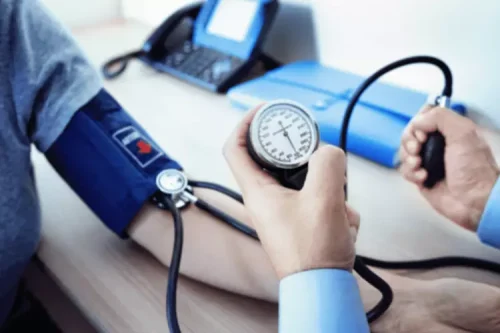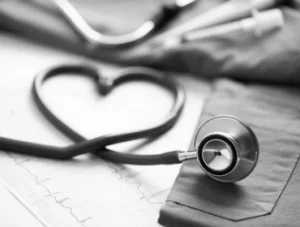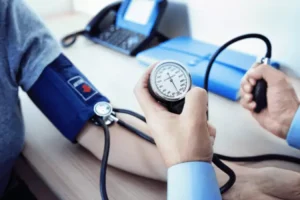施工実績

The Stages of Alcoholism: Early, Chronic, and End Stage
2024.03.01
This level of alcohol use disorder is extremely disruptive to families, relationships, and work environments. People with violent tendencies may become dangerous, and others may lose their jobs. It can be a significant strain on the patient and their loved ones when AUD develops at this level. Often, a person with problematic alcohol use will experience a few of these types of situations. It is important to think about how alcohol misuse may or may not be affecting all aspects of your life, and whether there are serious consequences for your alcohol use. Alcohol dependence also means that you have developed a tolerance to drinking.

Stage #1: Pre-Alcoholic (Binge Drinking and Social Drinking)
- However, recognizing the warning signs and behaviors during this stage can help individuals seek support and make informed decisions to prevent further progression.
- Financially, money is spent primarily on alcohol, leading to homelessness or complete financial ruin.
- They may also feel like it takes everything they’ve got to feel and act normal.
- If a person tries to quit drinking on their own during end-stage alcoholism, they may experience severe symptoms of withdrawal, including tremors and hallucinations.
The more alcohol you drink, the stronger the effects of alcohol on the body. In extreme cases,too much alcoholcan lead to coma or death, so it is important to recognize thesignsand stages of being drunk. Sexual function problems are very widespread among heavy drinkers, including premature ejaculation and erectile dysfunction. Research suggests any amount of alcohol consumption increases the risks of cancer of the mouth, voice box, upper throat, oesophagus and breast. When you give up alcohol, having been a dependent drinker, you’ll move through various stages of recovery. It can take your liver one week or longer to completely detox from alcohol after your last drink.
- It is a condition that affects people from all walks of life and can have severe implications for their health, relationships, and overall quality of life.
- And the physical costs of excessive alcohol use become noticeable.
- If you or someone you know is struggling with alcohol abuse, reach out to a healthcare professional or a local support group for assistance.
Stage 2 – early stages of alcohol abuse (prodromal)

At this point, the person finally realizes they have a problem and may attempt to mitigate it by changing their patterns. However, the most common attempts to alter drinking patterns involve things like switching brands or trying to scale back from liquor to beer or wine. Social drinking to curb anxiety may seem harmless, and many people can do it without moving further through the stages of alcohol use.
- When you use them to relieve feelings, you eventually need to drink more to achieve the desired effect.
- Changes in the digestive system after surgery cause alcohol to enter the bloodstream faster, leading to a stronger effect and a higher chance of developing AUD.
- Depending on how bad their alcohol abuse has been or if medically-assisted alcohol detox will be needed for withdrawal symptoms, entering into a treatment center may be a necessary option.
- With so many effects on the body, the usual first step in treating alcoholism is detox—or getting alcohol out of your system.
- In this middle ground, you might not meet the clinical criteria for addiction, but your relationship with alcohol is causing subtle problems in your health, relationships, or daily functioning.
Treatment for End-Stage Alcoholism

Paul is passionate about high-quality addiction treatment and truly believes that, with the right treatment, anyone can recover. Financial distress from job losses and loneliness due to damaged relationships are also prevalent in this phase. Your understanding of the above consents and disclaimers is greatly appreciated.
Individuals in this stage may not be familiar with different types of alcohol, so they are more likely to test their limits. This stage of alcoholism is often defined by the goal of “drinking to get drunk.” People who use alcohol often use it to self-medicate and escape negative thoughts and feelings. Usually, people in the first stage of alcoholism are not drinking every day, and they are still able to perform daily activities.

These physiological changes contribute to the increasing tolerance seen in early-stage alcoholics. Despite heavy alcohol consumption, they may show few signs of intoxication or ill effects from drinking, such as a hangover. And as tolerance builds, they’ll begin to drink more and more to achieve the same buzz or high they’re used to. The early or adaptive stage of alcoholism marks the beginning of an alcoholic’s struggle with addiction. At this point, drinking is no longer just a casual social activity — it’s become a daily habit that may be used to cope with stress, anxiety or other emotional problems.
Signs and Symptoms of Late-Stage Alcoholism
At this stage, drinking becomes everything in your life, even at the expense of your livelihood, your health and your relationships. Attempts to stop drinking can result in tremors or hallucinations, but therapy, detox, and rehab can help you get your life back. Stopping is impossible at this point without professional help because of the severe and potentially life-threatening withdrawal symptoms that would occur if they Halfway house quit cold turkey.
You may notice your loved one going out to party and drinking more than they used to or beginning to use increasing amounts of alcohol. Early misuse may transition from your loved one grabbing a alcohol intoxication drink immediately after work to having 3-4 drinks every day after work to escape from stress until bedtime. For others, misuse of alcohol could coincide with misuse of medications or other drugs or using them in dangerous situations. The early alcohol misuse stage covers a wide range of drinking patterns, including occasional irresponsible use, excessive drinking, or a diagnosable mild AUD. You may become more depressed, more anxious, or start losing sleep.
- This should include options for detoxification, where medical professionals help you safely get through the withdrawals as alcohol leaves your system.
- From celebrating achievements to unwinding after a stressful day, drinking is normalized in ways that can mask developing problems.
- At this crisis point and final stage, everyone is aware of the effects of alcoholism.
- Later, it can cause fatigue, bleeding and bruising, itchy skin, yellow discoloration of the skin and eyes and fluid accumulation in the abdomen known as ascites.
- Stopping is impossible at this point without professional help because of the severe and potentially life-threatening withdrawal symptoms that would occur if they quit cold turkey.
A Note on the Modern Understanding of Alcohol Use Disorder
Join Eleanor Health as one of our members https://ecosoberhouse.com/ and join the community. Human services organisations can assist individuals in connecting with the appropriate treatment programs and resources. They can provide information on available mental health services, support groups, and other community resources that can aid in the recovery process.




